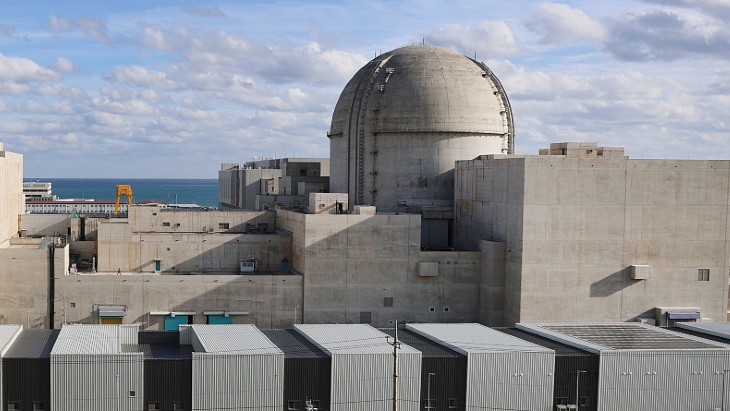The importance of standardisation in the evaluation of reactor designs is key to making nuclear power plant projects more efficient and cost-effective, Jerry Head, senior vice president of regulatory affairs at GE Hitachi Nuclear Energy told delegates at the World Nuclear Association's 41st Annual Symposium in London last week. Head outlined seven areas where such an approach can bring harmony to the process of managing projects from the design licensing stage through to decommissioning.
Head looked back on the eight years since the OECD Nuclear Energy Agency established the Multinational Design Evaluation Program (MDEP). According to the NEA, MDEP works on the development of "innovative approaches to leverage the resources and knowledge of national regulatory authorities that are currently or will be tasked with the review of new nuclear power reactor designs". The nuclear regulatory authorities of 15 countries participate in MDEP.
The "curve of the past eight years" in MDEP shows "a way for regulators to work together and focus on common issues," Head said. "It's important for us as an industry to drive standardisation wherever we can."
Where this "makes sense", he said, lies firstly with "design and licensing efficiency".
He said: "To be able to take a licence for a reactor design to another country without changes being made to it is obviously a lot more efficient and cost-effective and gives you the ability to focus your resources."
Secondly, more thorough design and safety reviews can be ensured "if the regulators for a given country have the ability take advantage of the fact the country of origin or another country has already looked at the design," he said. "And they may have their own areas of expertise, which results in a more thorough review of the plant."
Thirdly, a "more stable supply chain" is possible "as you go forward to construction if you've got a standard design".
"You can spend your time with the supply chain to get the processes, the codes and standards they have to work with, the requirements within the process for inspection," he said, and if all these are uniform the outcome will be a "safer process because you don't have to change the standards that you're working to".
Fourthly, standardisation can lead to a "more efficient product life-cycle", he said. Nuclear power plants typically have a design operating period of 60-80 years, he noted. "So if you've got a standard design to start with and you've got a multiple number of those designs in operation, then the improvements you can do will be effectively implemented across all of those [plants] in a systematic fashion." This means "managing the operational safety" of a nuclear power plant fleet for up to eight decades, he added.
"Another place where there's obvious synergy," he said, are 'owners groups'. "When you have plant designs in multiple countries, the owners and regulators are speaking the same language, so to speak, and share common practices and features in the design that they bring together to make a more cohesive unit."
"Owners groups in which regulators share their side of the operational experience through regulatory inspections and through monitoring performance benefits overall safety in the operation and in the economics of operation as well," he said.
An area for owners groups to work on is improved emergency planning and response. Standardised designs allow similarity between systematic approaches to incidents and accidents, leaving "just site specific differences to deal with", he said. "So this becomes more uniform and the sides can learn the lessons from across the fleet."
Standardisation between regulatory and operation processes can lead to "shared benefits" at the decommissioning stage, Head said.
On the status of advanced reactors for commercial use, Head used the International Atomic Energy Agency's ARIS Database to illustrate the role of MDEP.
Currently there are 42 "concept designs", including Gen III, Gen III+ and Gen 4 types of reactors, Head noted. Of these, 27 are under the design phase and include 19 small modular recators.
Out of remaining 15 "commercial concept" reactors, two are listed on the ARIS Database as "on hold" and have been design certified in the country of origin, he said. Three are in operation, two have completed the licensing process in the country of origin, but have not yet begun construction anywhere, and eight have cleared the hurdles of licensing in the country of origin and/or in the country where they have begun construction.
There are five concept designs that have undergone or are undergoing the "rigorous" multinational design evaluation process, he said. These are: Hitachi's Advanced Boiling Water Reactor; Westinghouse's AP1000, EDF/Areva's European Pressurised Reactor, the Korean-designed Advanced Pressurised Reactor-1400; and Rosatom's VVER design. These are in various stages of licensing and construction.
Researched and written
by World Nuclear News




_72306.jpg)


_49562.jpg)





